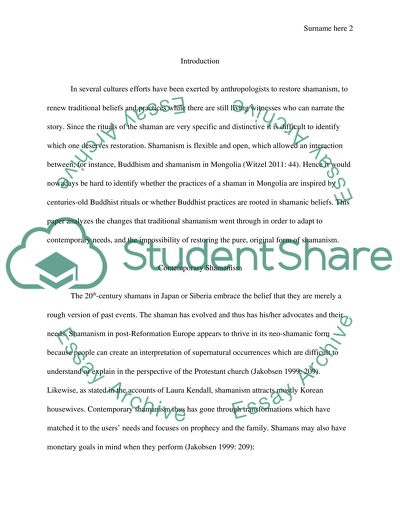Cite this document
(“Rediscovering the Link between Traditional and Modern Shamanism Research Paper”, n.d.)
Rediscovering the Link between Traditional and Modern Shamanism Research Paper. Retrieved from https://studentshare.org/anthropology/1486778-research-essay
Rediscovering the Link between Traditional and Modern Shamanism Research Paper. Retrieved from https://studentshare.org/anthropology/1486778-research-essay
(Rediscovering the Link Between Traditional and Modern Shamanism Research Paper)
Rediscovering the Link Between Traditional and Modern Shamanism Research Paper. https://studentshare.org/anthropology/1486778-research-essay.
Rediscovering the Link Between Traditional and Modern Shamanism Research Paper. https://studentshare.org/anthropology/1486778-research-essay.
“Rediscovering the Link Between Traditional and Modern Shamanism Research Paper”, n.d. https://studentshare.org/anthropology/1486778-research-essay.


